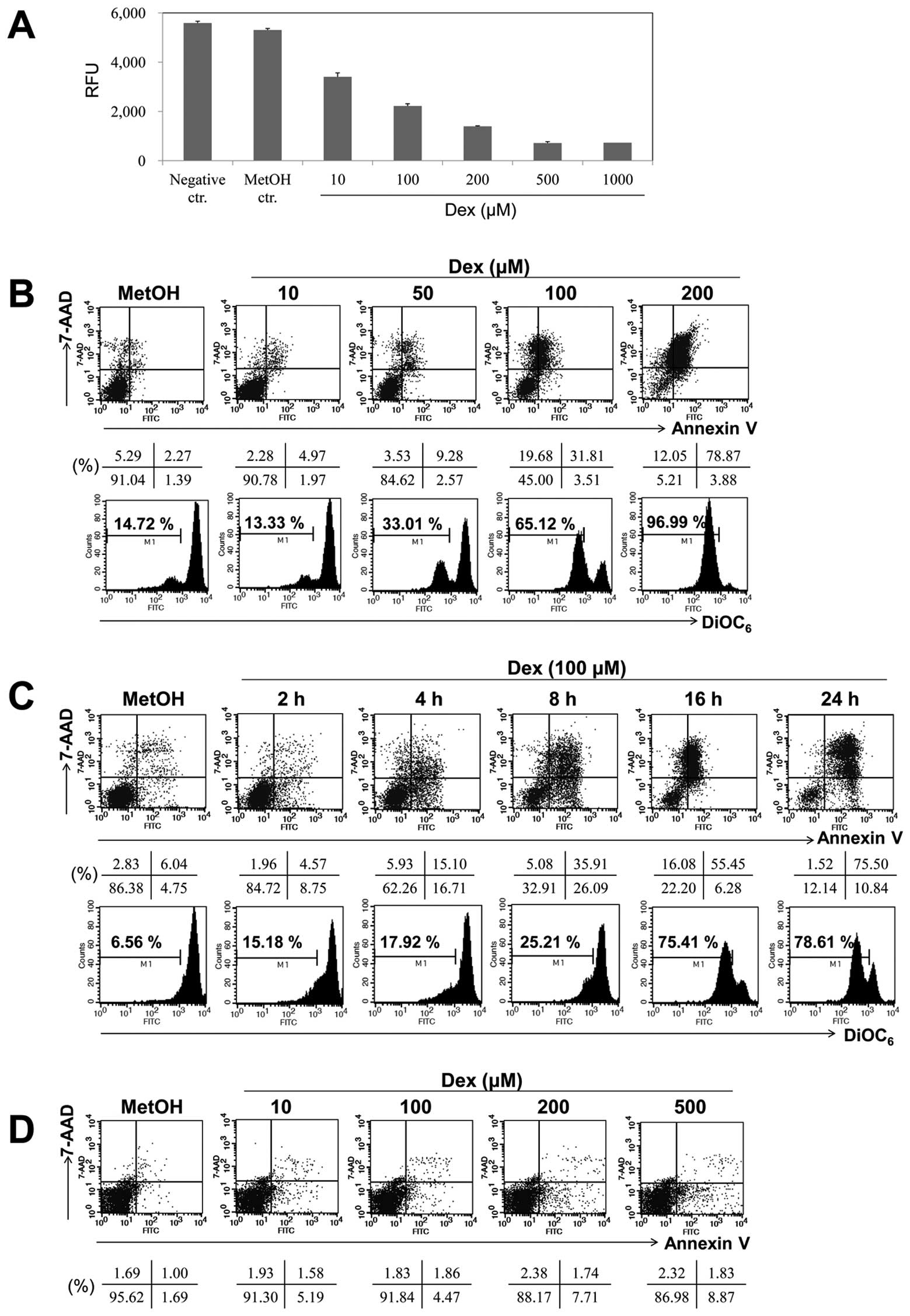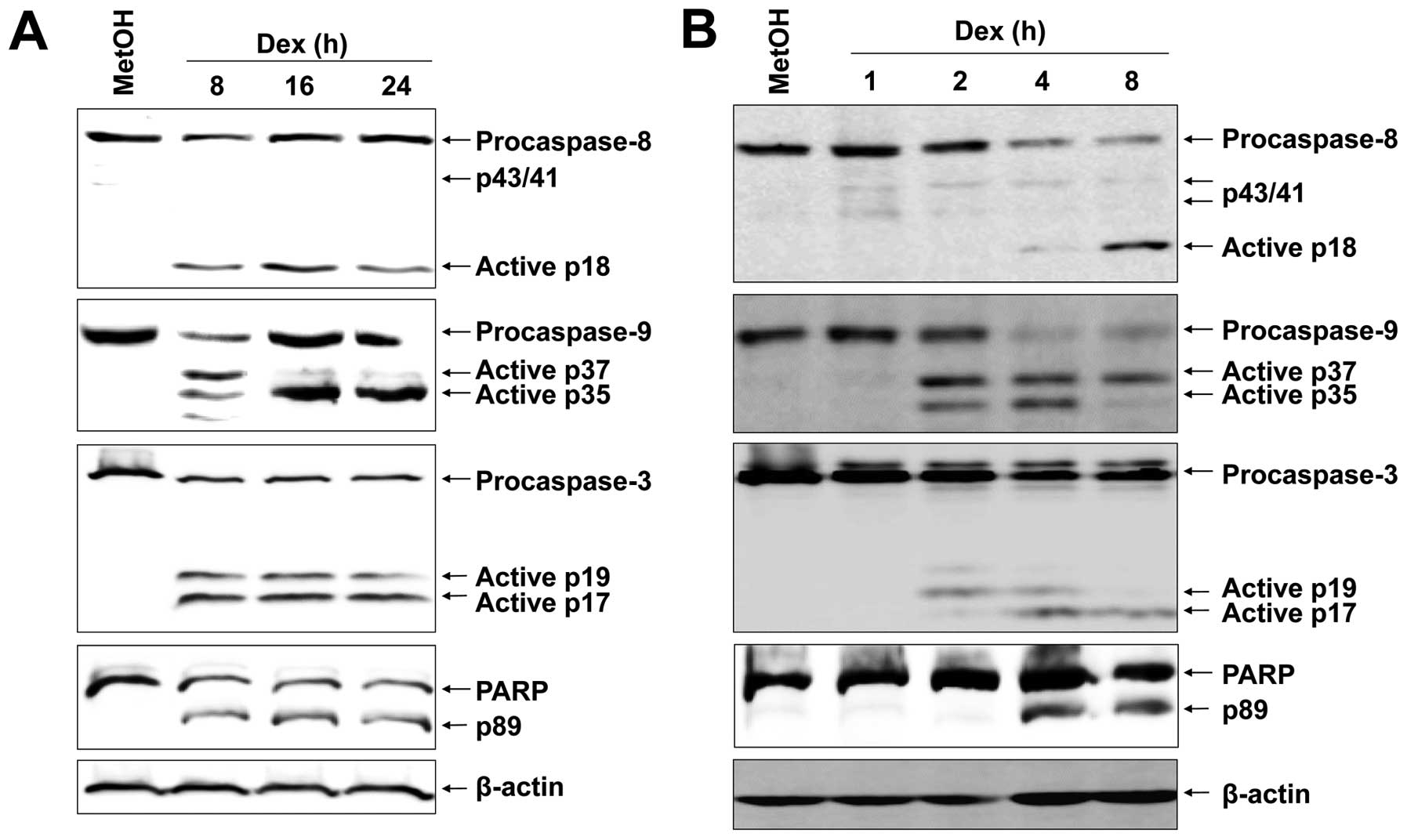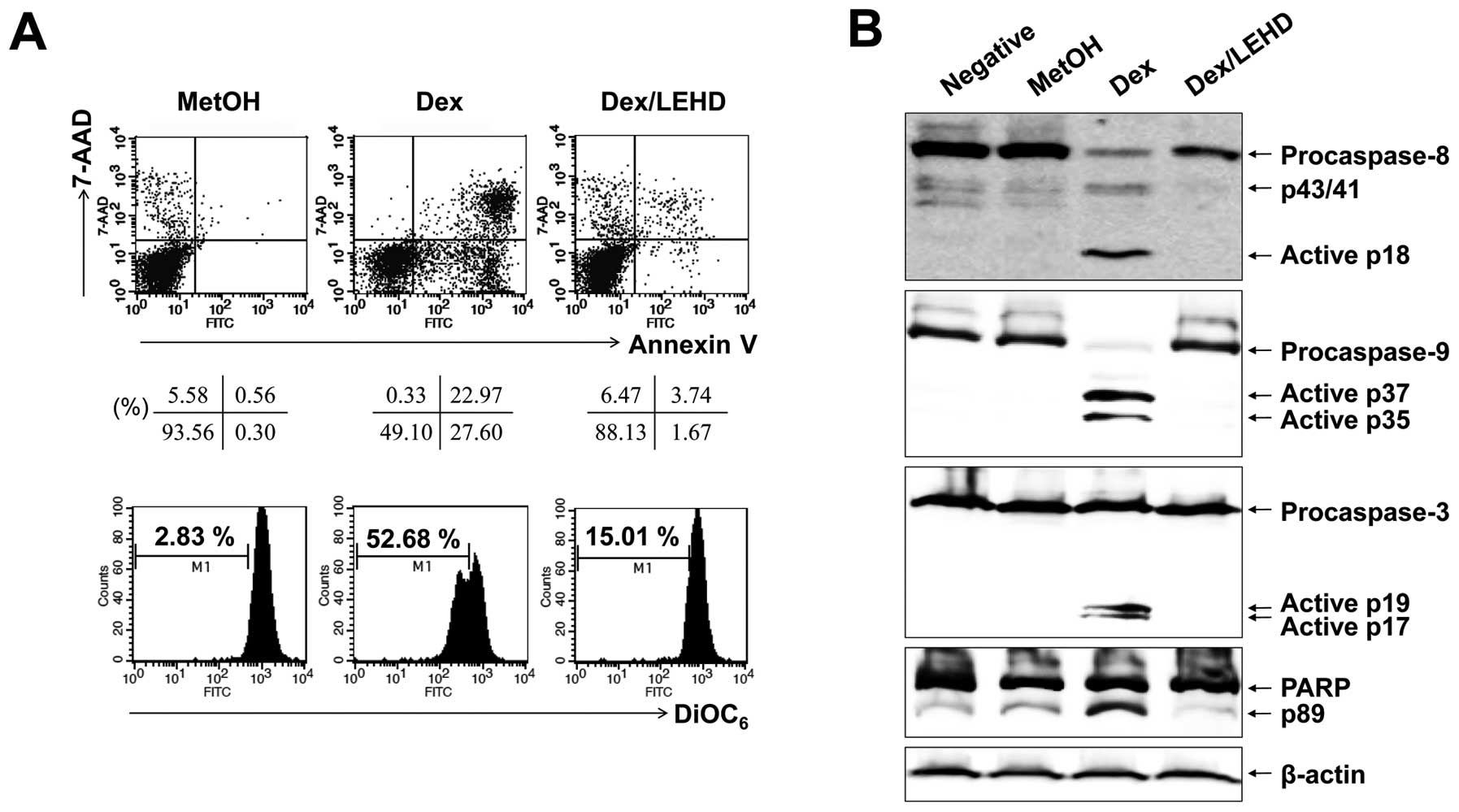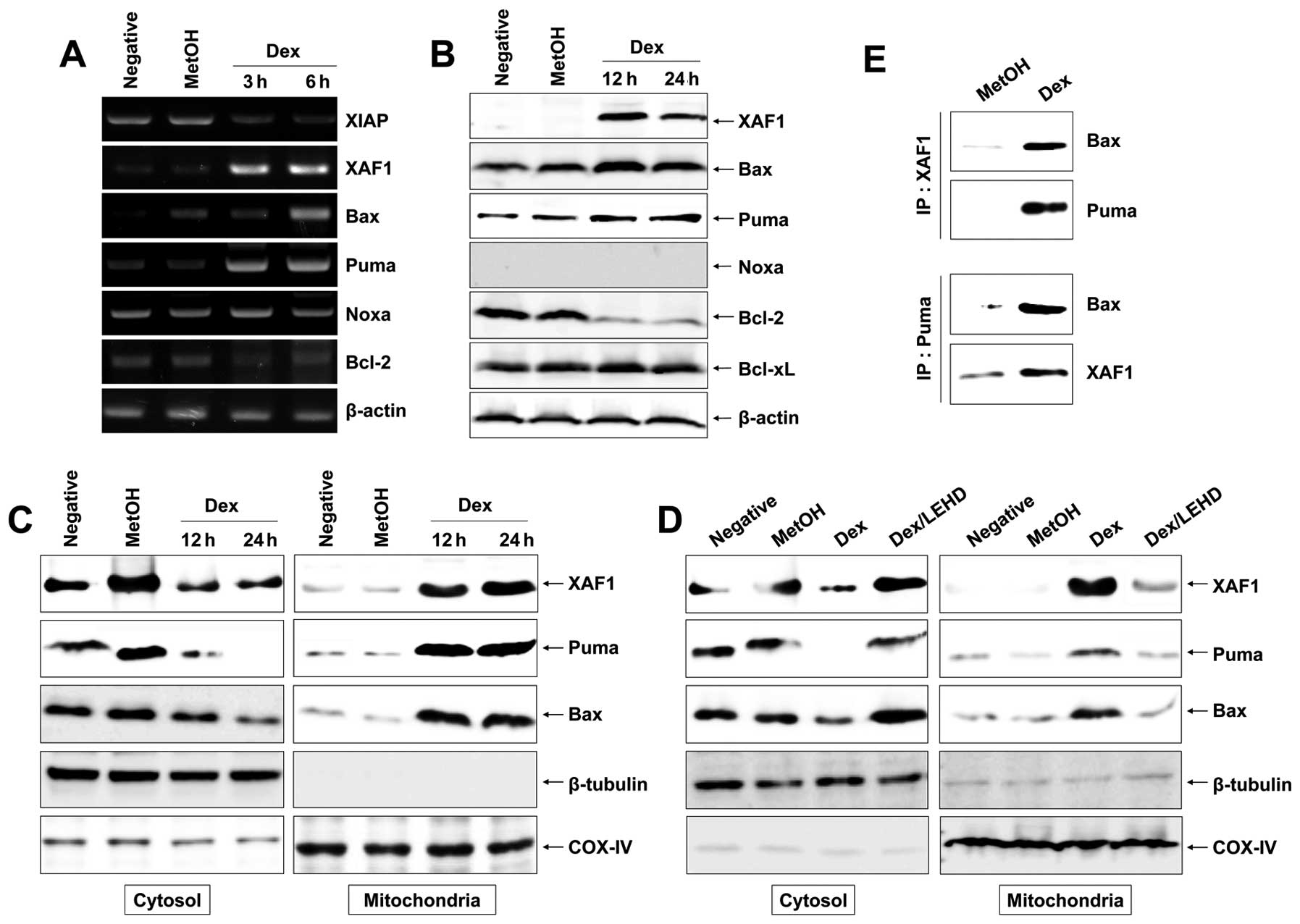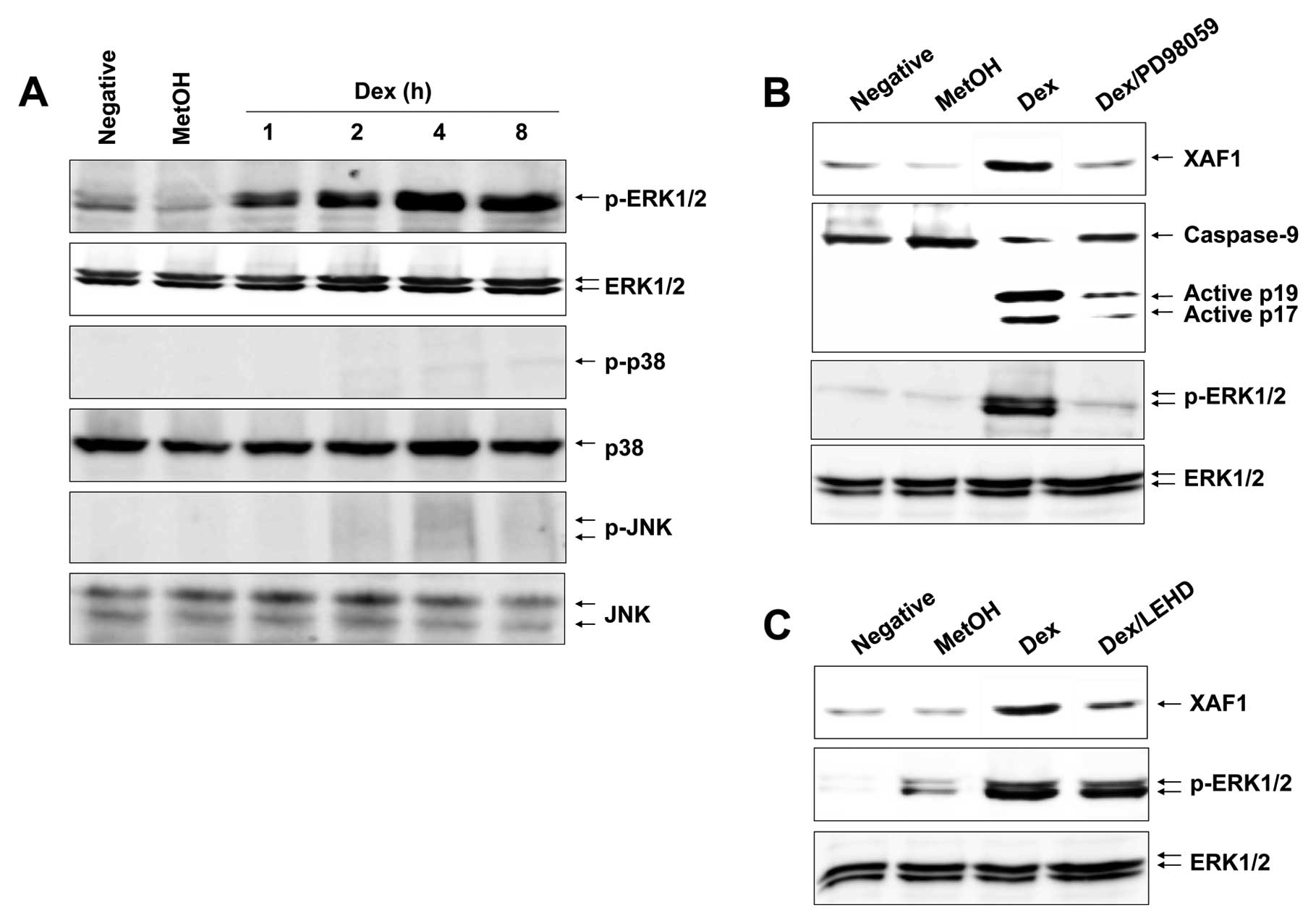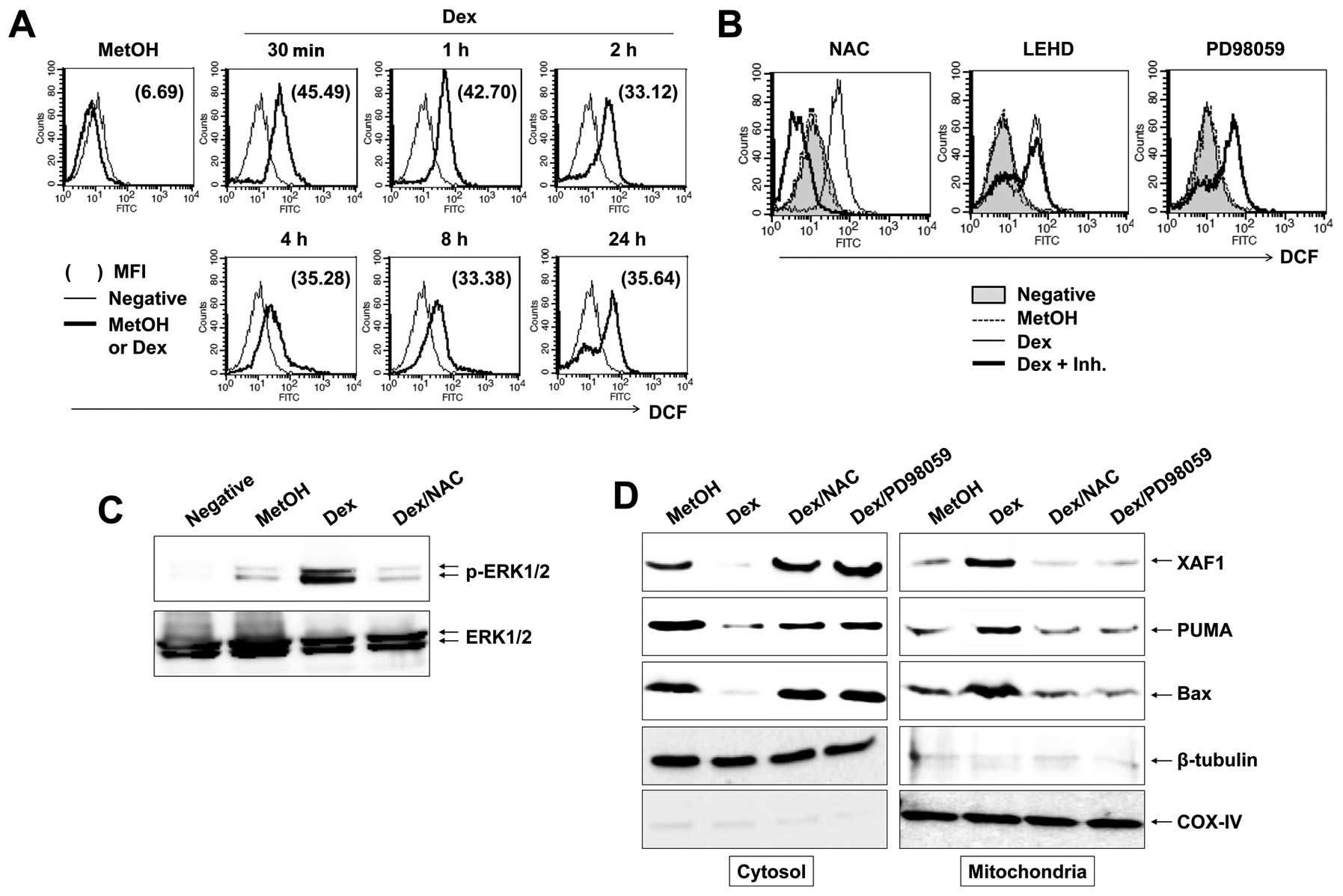|
1.
|
Young LS and Rickinson AB: Epstein-Barr
virus: 40 years on. Nat Rev Cancer. 4:757–768. 2004.PubMed/NCBI
|
|
2.
|
Kuppers R: B cells under influence:
transformation of B cells by Epstein-Barr virus. Nat Rev Immunol.
3:801–812. 2003. View
Article : Google Scholar : PubMed/NCBI
|
|
3.
|
Lopez-Royuela N, Balsas P, Galan-Malo P,
Anel A, Marzo I and Naval J: Bim is the key mediator of
glucocorticoid-induced apoptosis and of its potentiation by
rapamycin in human myeloma cells. Biochim Biophys Acta.
1803:311–322. 2010. View Article : Google Scholar : PubMed/NCBI
|
|
4.
|
Laane E, Panaretakis T, Pokrovskaja K, et
al: Dexamethasone-induced apoptosis in acute lymphoblastic leukemia
involves differential regulation of Bcl-2 family members.
Haematologica. 92:1460–1469. 2007. View Article : Google Scholar
|
|
5.
|
Li Z, Chen Y, Cao D, Wang Y, Chen G, Zhang
S and Lu J: Glucocorticoid upregulates transforming growth factor-β
(TGF-β) type II receptor and enhances TGF-β signaling in human
prostate cancer PC-3 cells. Endocrinology. 147:5259–5267. 2006.
|
|
6.
|
Li M, Chen F, Liu CP, Li DM, Li X, Wang C
and Li JC: Dexamethasone enhances trichosanthin-induced apoptosis
in the HepG2 hepatoma cell line. Life Sci. 86:10–16. 2010.
View Article : Google Scholar : PubMed/NCBI
|
|
7.
|
Dobos J, Kenessey I, Timar J and Ladanyi
A: Glucocorticoid receptor expression and antiproliferative effect
of dexamethasone on human melanoma cells. Pathol Oncol Res.
17:729–734. 2011. View Article : Google Scholar : PubMed/NCBI
|
|
8.
|
Yamamoto T, Nishiguchi M, Ioue N, et al:
Inhibition of murine osteosarcoma cell proliferation by
gluocorticoid. Anticancer Res. 22:4151–4156. 2002.PubMed/NCBI
|
|
9.
|
Greenberg AK, Hu J, Basu S, et al:
Glucocorticoids inhibit lung cancer cell growth through both the
extracellular signal-related kinase pathway and cell cycle
regulators. Am J Respir Cell Mol Biol. 27:320–328. 2002. View Article : Google Scholar : PubMed/NCBI
|
|
10.
|
Wang H, Wang Y, Rayburn ER, Hill DL,
Rinehart JJ and Zhang R: Dexamethasone as a chemosensitizer for
breast cancer chemotherapy: potentiation of the antitumor activity
of adriamycin, modulation of cytokine expression, and
pharmacokinetics. Int J Oncol. 30:947–953. 2007.PubMed/NCBI
|
|
11.
|
Xu MJ, Fang GE, Liu YJ and Song LN:
Effects of glucocorticoid on proliferation, differentiation, and
glucocorticoid receptor expression in human ovarian carcinoma cell
line 3AO. Acta Pharmacol Sin. 23:819–823. 2002.PubMed/NCBI
|
|
12.
|
Liston P, Fong WG, Kelly NL, et al:
Identification of XAF1 as an antagonist of XIAP anti-Caspase
activity. Nat Cell Biol. 3:128–133. 2001. View Article : Google Scholar : PubMed/NCBI
|
|
13.
|
Wang J, He H, Yu L, et al: HSF1
down-regulates XAF1 through transcriptional regulation. J Biol
Chem. 281:2451–2459. 2006. View Article : Google Scholar : PubMed/NCBI
|
|
14.
|
Fong WG, Liston P, Rajcan-Separovic E, St
Jean M, Craig C and Korneluk RG: Expression and genetic analysis of
XIAP-associated factor 1 (XAF1) in cancer cell lines. Genomics.
70:113–122. 2000. View Article : Google Scholar : PubMed/NCBI
|
|
15.
|
Byun DS, Cho K, Ryu BK, Lee MG, Kang MJ,
Kim HR and Chi SG: Hypermethylation of XIAP-associated factor 1, a
putative tumor suppressor gene from the 17p13.2 locus, in human
gastric adenocarcinomas. Cancer Res. 63:7068–7075. 2003.PubMed/NCBI
|
|
16.
|
Tu SP, Sun YW, Cui JT, et al: Tumor
suppressor XIAP-associated factor 1 (XAF1) cooperates with tumor
necrosis factor-related apoptosis-inducing ligand to suppress colon
cancer growth and trigger tumor regression. Cancer. 116:1252–1263.
2010. View Article : Google Scholar
|
|
17.
|
Huang J, Yao WY, Zhu Q, Tu SP, Yuan F,
Wang HF, Zhang YP and Yuan YZ: XAF1 as a prognostic biomarker and
therapeutic target in pancreatic cancer. Cancer Sci. 101:559–567.
2010. View Article : Google Scholar : PubMed/NCBI
|
|
18.
|
Lee MG, Huh JS, Chung SK, et al: Promoter
CpG hyper-methylation and downregulation of XAF1 expression in
human urogenital malignancies: implication for attenuated p53
response to apoptotic stresses. Oncogene. 25:5807–5822. 2006.
View Article : Google Scholar : PubMed/NCBI
|
|
19.
|
Straszewski-Chavez SL, Visintin IP,
Karassina N, et al: XAF1 mediates tumor necrosis
factor-alpha-induced apoptosis and X-linked inhibitor of apoptosis
cleavage by acting through the mitochondrial pathway. J Biol Chem.
282:13059–13072. 2007. View Article : Google Scholar
|
|
20.
|
Martelli AM, Cappellini A, Tazzari PL, et
al: Caspase-9 is the upstream caspase activated by
8-methoxypsoralen and ultraviolet-A radiation treatment of Jurkat T
leukemia cells and normal T lymphocytes. Haematologica. 89:471–479.
2004.
|
|
21.
|
Park GB, Kim YS, Lee HK, Song H, Cho DH,
Lee WJ and Hur DY: Endoplasmic reticulum stress-mediated apoptosis
of EBV-transformed B cells by cross-linking of CD70 is dependent
upon generation of reactive oxygen species and activation of p38
MAPK and JNK pathway. J Immunol. 185:7274–7284. 2010. View Article : Google Scholar : PubMed/NCBI
|
|
22.
|
Matsuzawa A and Ichijo H:
Stress-responsive protein kinases in redox-regulated apoptosis
signaling. Antioxid Redox Signal. 7:472–481. 2005. View Article : Google Scholar : PubMed/NCBI
|
|
23.
|
Chiu WH, Luo SJ, Chen CL, et al: Vinca
alkaloids cause aberrant ROS-mediated JNK activation, Mcl-1
downregulation, DNA damage, mitochondrial dysfunction, and
apoptosis in lung adenocarcinoma cells. Biochem Pharmacol.
83:1159–1171. 2012. View Article : Google Scholar : PubMed/NCBI
|
|
24.
|
Baghdassarian N, Catallo R, Mahly MA,
French P, Chizat F, Bryon PA and French M: Glucocorticoids induce
G1 as well as S-phase lengthening in normal human stimulated
lymphocytes: differential effects on cell cycle regulatory
proteins. Exp Cell Res. 240:263–273. 1998. View Article : Google Scholar
|
|
25.
|
Ramalingam A, Hirai A and Thompson EA:
Glucocorticoid inhibition of fibroblast proliferation and
regulation of the cyclin kinase inhibitor p21Cip1. Mol Endocrinol.
11:577–586. 1997. View Article : Google Scholar : PubMed/NCBI
|
|
26.
|
Gupta S: Molecular signaling in death
receptor and mitochondrial pathways of apoptosis. Int J Oncol.
22:15–20. 2003.PubMed/NCBI
|
|
27.
|
Canton M, Caffieri S, Dall’Acqua F and Di
Lisa F: PUVA-induced apoptosis involves mitochondrial dysfunction
caused by the opening of the permeability transition pore. FEBS
Lett. 522:168–172. 2002. View Article : Google Scholar : PubMed/NCBI
|
|
28.
|
Wang J, Zhang W, Zhang Y, et al: c-Jun
N-terminal kinase (JNK1) upregulates XIAP-associated factor 1
(XAF1) through interferon regulatory factor 1 (IRF-1) in
gastrointestinal cancer. Carcinogenesis. 30:222–229. 2009.
View Article : Google Scholar : PubMed/NCBI
|
|
29.
|
Melino G, Bernassola F, Ranalli M, et al:
p73 induces apoptosis via PUMA transactivation and Bax
mitochondrial translocation. J Biol Chem. 279:8079–8083. 2004.
View Article : Google Scholar : PubMed/NCBI
|
|
30.
|
Roman M, Chen W and Cobb MH: Differential
regulation and properties of MAPKs. Oncogene. 26:3100–3112. 2007.
View Article : Google Scholar : PubMed/NCBI
|
|
31.
|
Zhang W and Liu HT: MAPK signal pathways
in the regulation of cell proliferation in mammalian cells. Cell
Res. 12:9–18. 2002. View Article : Google Scholar : PubMed/NCBI
|
|
32.
|
Desbarats J, Birge RB, Mimouni-Rongy M,
Weinstein DE, Palerme JS and Newell MK: Fas engagement induces
neurite growth through ERK activation and p35 upregulation. Nat
Cell Biol. 5:118–125. 2003. View
Article : Google Scholar : PubMed/NCBI
|
|
33.
|
Zhuang S and Schnellmann RG: A
death-promoting role for extracellular signal-regulated kinase. J
Pharmacol Exp Ther. 319:991–997. 2006. View Article : Google Scholar : PubMed/NCBI
|















